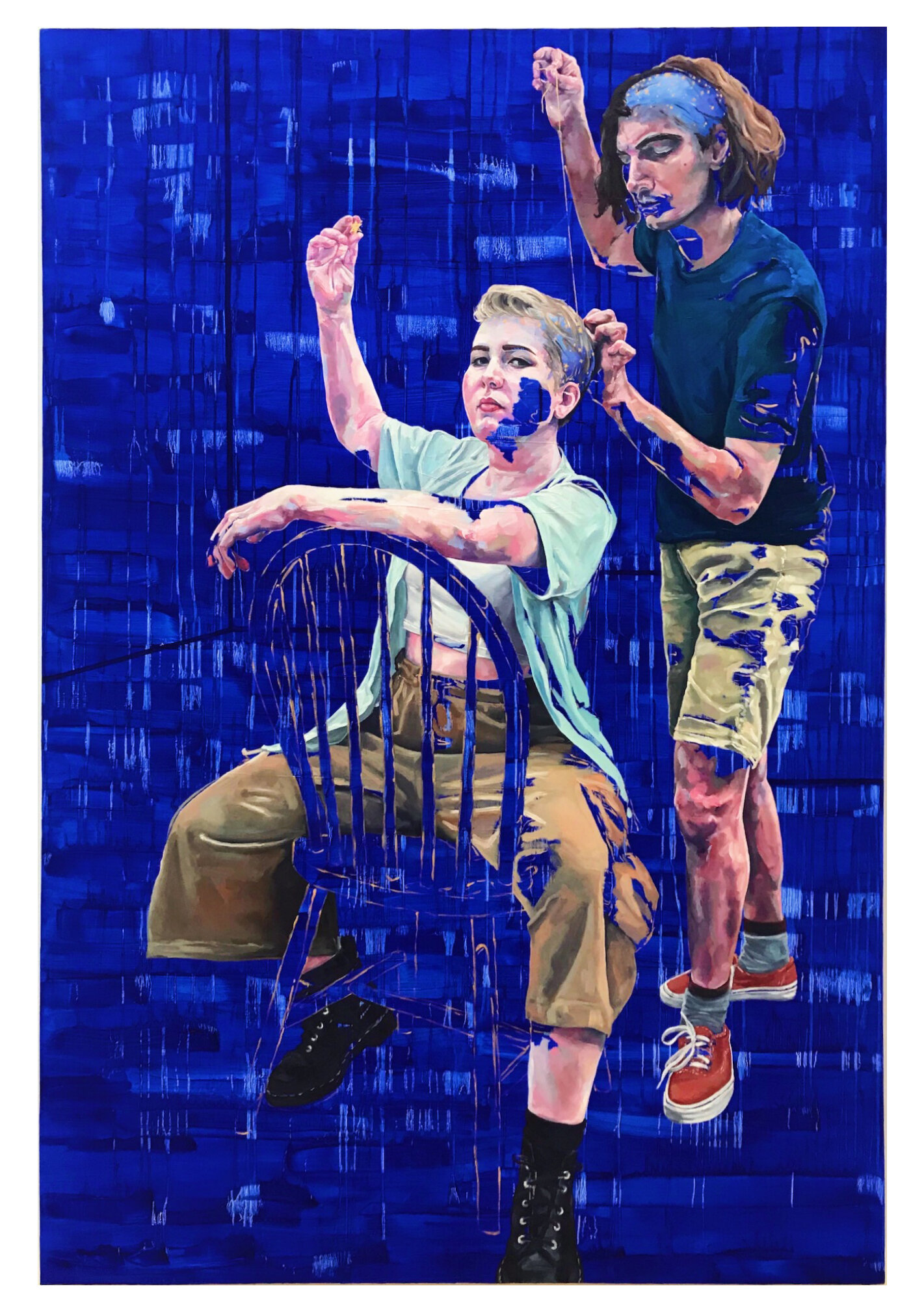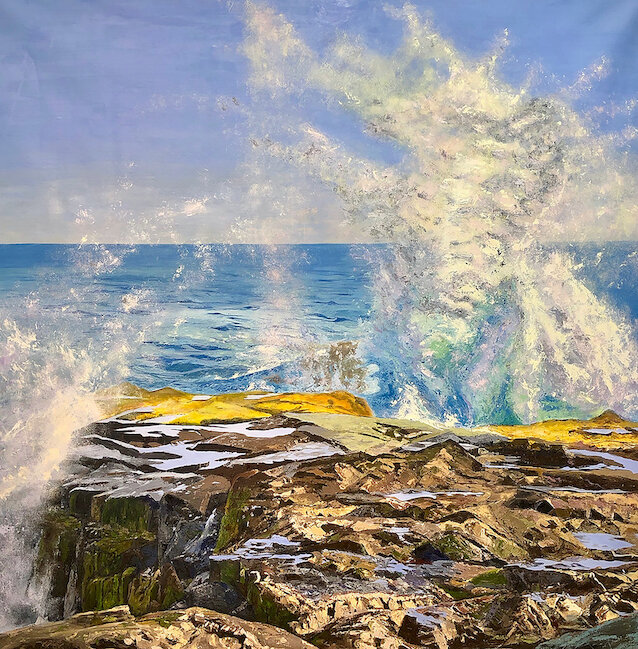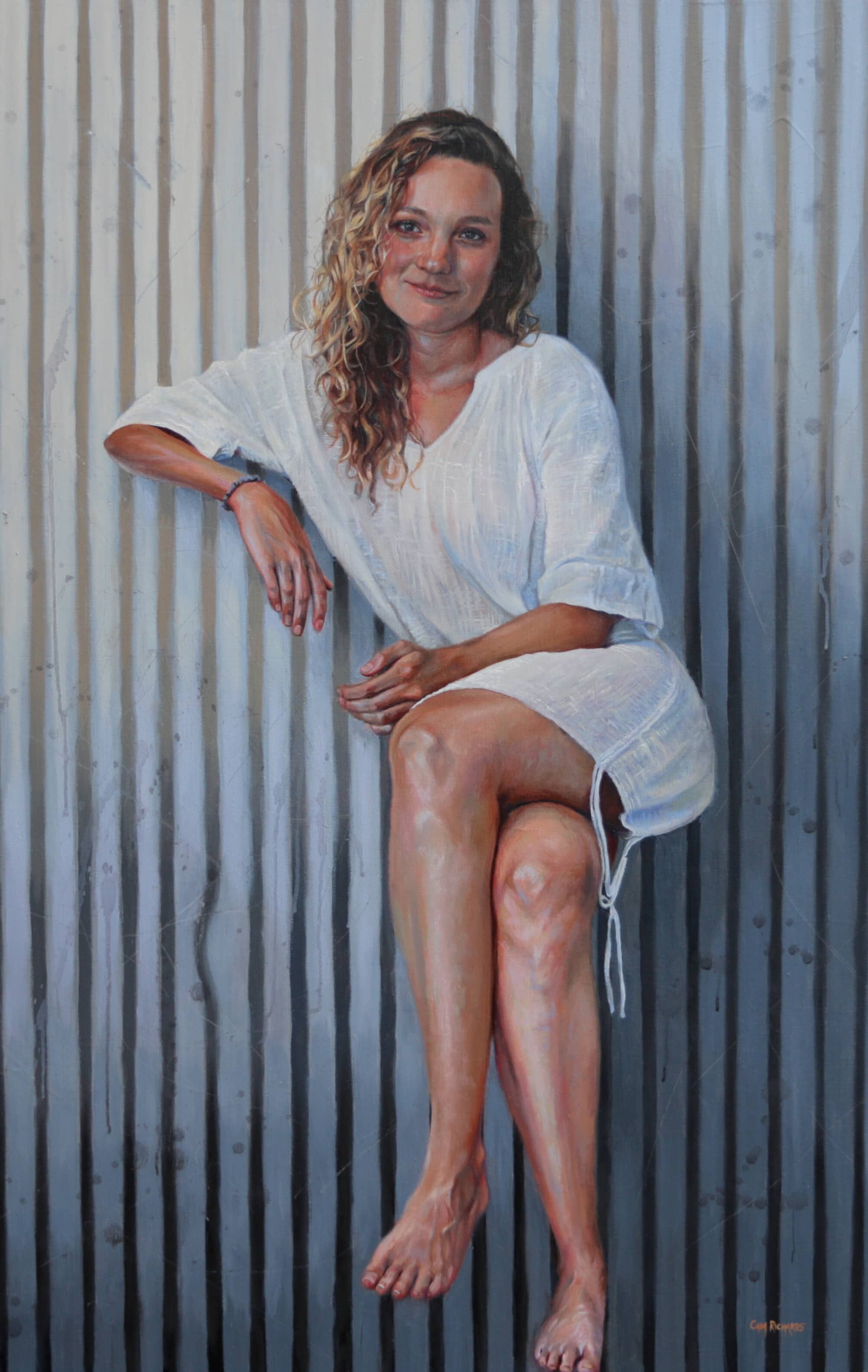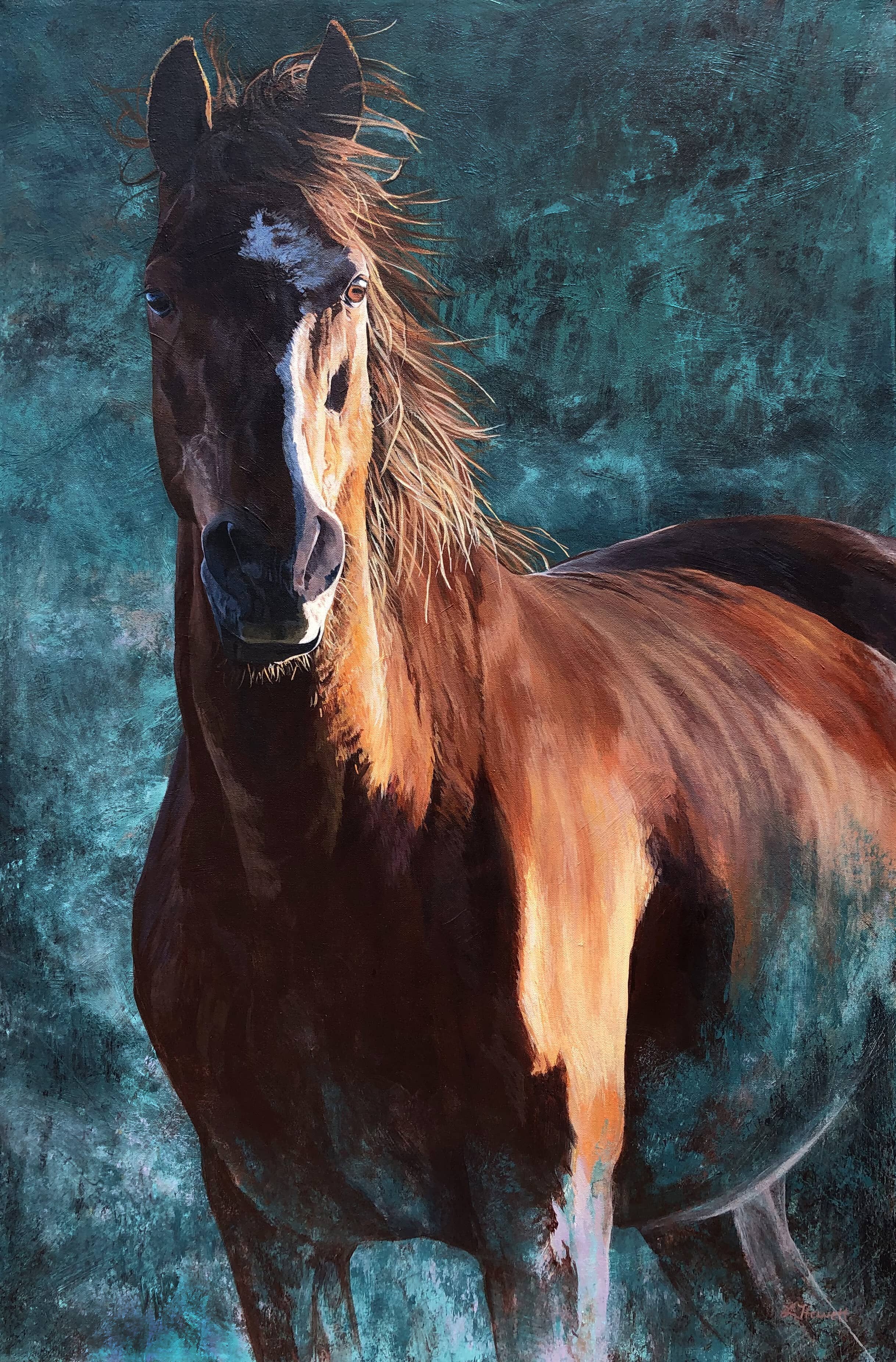10 Ways to Make Money As An Artist
How do you make money online? It used to be you found people to buy your work and that was the only avenue. But this is 2021, and we did not go through 2020 to come out as a “starving artist”. Here are 10 ways to make money with your artwork and creativity.
NFT ART
NFTs are best understood as computer files combined with proof of ownership and authenticity, like a deed. Like cryptocurrencies such as Bitcoin, they exist on a blockchain—a tamper-resistant digital public ledger. But like dollars, cryptocurrencies are “fungible,” meaning one bitcoin is always worth the same as any other bitcoin. By contrast, NFTs have unique valuations set by the highest bidder, just like a Rembrandt or a Picasso. Artists who want to sell their work as NFTs have to sign up with a marketplace, then “mint” digital tokens by uploading and validating their information on a blockchain (typically the Ethereum blockchain, a rival platform to Bitcoin). Doing so usually costs anywhere from $40 to $200. They can then list their piece for auction on an NFT marketplace, similar to eBay.
A bubble it may be. But many digital artists, fed up after years of creating content that generates visits and engagement on Big Tech platforms like Facebook and Instagram while getting almost nothing in return, have lunged headlong into the craze. These artists of all kinds—authors, musicians, filmmakers—envision a future in which NFTs transform both their creative process and how the world values art.
2. Applying For Grants & Competitions
Many international programs, local communities or non-profit organizations offer grants for artists. The aim of these is either to support young artists, promote culture or address a particular problem. Other times local institutions need actual pieces of art to decorate new buildings or give a nice touch to an event.
How do you apply to these programs?
Try a simple online search like “grants for artists”, “art award” or “Boynes Emerging Artist Award” ;) . To narrow the search down, you can add your specific country, state, city but if you want access to exposure internationally it’s always best to search without a location or “international art competition”. You will probably find at least several contests or programs that you are eligible to enter and win cash or other prizes, and the chance to show your work.
Also, be sure to follow the news on social media and your artistic or professional circles, like the university, artist association or NGO.
3. Teaching an Art Course
If you already have experience, you can help other aspiring artists to follow their dreams. Many people nowadays, especially with the current global crisis ie Covid-19, prefer to follow an online class or a webinar from their home, especially those who don’t have many local opportunities to attend a course. There are several ways to teach, educate and consult people online as a freelancer. One great example is what 4th Edition Judge Dennis Perrin does, he created an Art School at Home where he teaches The Perrin Method [his own style of painting] online, or 3rd Edition 2nd Place winner Anne Murphy Robinson , she specialises in using a charcoal sanding technique with her drawings and she gives Zoom workshops to teach others how to do it.
4. Exhibition
Exhibition is the selection, organization and presentation of art for display purposes. You would typically see this being done at exhibitions in museums, art galleries, etc. Firstly, you can start by researching the galleries or museums that you are interested in showcasing your art to acquaint yourself with their aesthetic, history, curators, clientele, audience, frequency of art shows and to find out if your art style would best suit and complement theirs. It would also be useful to ask them about their specific buying process and how to submit your proposal. In your proposal, you want to include high-quality images of your work along with your CV and a bio that highlights your artistic background as well as how your art would be a great asset to their exhibition.
Also, don’t limit yourself to just one gallery or museum. Keep your options open for an increased chance of being successful whether you want to be a part of a virtual exhibition, one in your area or one halfway around the world.
It’s also important to find out the commission percentage of the galleries as each one may have a different rate. That’s to say, some have no initial fee but have higher commission and others have start-up fees but lower commission rates.
5. Selling online on your website
We’re in the digital era so why not use the tools that are right at our disposal. Creating your own website to showcase yourself, and your work is a great way to reach audiences not only in your country but all around the world. With a website, you’re giving your viewers a convenient and at times faster way to purchase your work, for them to make inquiries, share and recommend the website to others to increase its traffic.
When selling online, you want your product photography to be on point and abundant to capture the best reflection and representation of the pieces you’ve worked so hard on. Remember that this is what will attract your clientele! To also make this page, even more, user-friendly, you can provide detailed descriptions so that viewers know key information such as dimensions, medium, title, etc.
Now, what happens when an item is sold out? Should you delete the image? It’s best to keep the image as it is a part of your portfolio and gives the viewer access to see all of it as opposed to limiting them. Simply, you can add a notice informing the customer that this item is currently sold out and you can even include an option for pre-orders when the next batch is available and information about when the piece may be restocked.
6. AUCTIONS
Auctions are great if you are interested in selling your original pieces and in giving the buyer a one-of-a-kind piece. When submitting artwork to be sold at auctions, you want to research the auction to better understand their history, commission, rules, and guidelines. Then, you can submit a description of the piece such as dimensions, medium, and title, and complete any forms that may be part of this process. The company would normally review your submission after and get in contact with you to inform you about the specifications within their process and guide you to increase your chances of success. Equally, if you are now starting out with auctions, you can start small and work your way up to the major auction houses because they are known for accepting artwork only from artists who have visible experience of selling for great prices when auctioning. This is to ensure that they will make a profit as well.
7. START AND MONETIZE AN ART BLOG
Yes, this is for you writing lovers out there. Why not combine two of your passions and start an art blog. Just like sharing your knowledge through teaching, you can use your blog to shed light on your expertise in your medium and give helpful tips and reviews for budding artists. When it comes to monetizing your blog, there are different ways such as affiliate marketing, selling Ad space, having a membership option with a fee for your blog, sponsored blog posts and so much more. Affiliate marketing is promoting a product or service and get a commission for each sale or registration you helped make through your affiliate links. It can help if you join programs that are art-related to keep your content relevant to your blog and the needs and wants of the reader. Likewise, you can sell Ad space in your articles to companies. Google AdSense allows you to use targeted advertising and you can also sign up for ad programs specifically for blogs or directly liaise with companies to be able to advertise for them. The key in all of this is to additionally grow your blog viewership and traffic so that your profits can increase as well. You can read more in-depth on this in our latest article, ‘How to Monetize Your Art Blog’.
8. SPEAKING ENGAGEMENTS
Do you love public speaking and inciting passion in others for a topic through conversations and face-to-face interaction? Well, this one is for you! You’re not just a creative, you’re a creative thinker and you can make money from imparting your knowledge, tips, and advice about your trade through conferences and workshops at educational institutes, local community groups, consultancy groups, and even your own events. You can Google and search on social media platforms like Facebook, LinkedIn, Twitter, and Instagram, keywords such as ‘[your country/ state/ region] art conferences’ or ‘(speakers needed for) art events’, ‘speaking engagements for artists’ and contact coordinators to tell them about your interest in collaborating. Research the event to get more knowledge about it so that you can add a personal touch when reaching out to coordinators as opposed to using generic templates from the Internet. According to Harvard Business Review, depending on your expertise, you can be paid between $500-$2,500 as a novice and between $10,000-$20,000 if you’re an expert with several books and an expert who is also a bestselling author or well known in the industry can earn up to $35,000 per talk.
9. LICEnse and sell your art to stock websites
Art licensing is when a manufacturer ie. the licensee pays you, the artist, to use your work in their products. Your work can be used as stock images on websites such as Shuttershock, Canva, Pixabay, Getty Images, and many others. These businesses look for high-quality images and videos that can be downloaded and used by their users. You can make money every time someone downloaded your images, how great is that! The drawback is thought that because of the saturation of people engaging in this source of passive income but you don’t have to let that stop you; you just need to curate best selling images such as candids, wide shots, photos with one subject, and photos in which the subject is looking away from the camera as opposed to facing it. Shuttershock, for example, has a 6 level pay scale that ranges between 15%and 40% of earnings according to the number of downloads your image gets in a year.
10. SELL THROUGH YOUR SOCIAL MEDIA
Many social media platforms have designated areas to be able to promote and sell your work such as Selfy and Facebook’s Marketplace section and of course, you can do it on your feed itself if you desire. How Selfy.com works is that it allows you to sell your products directly on social media and your website with your very own custom storefront. There’s a built-in print on demand where you can create and sell your prints within minutes from that one storefront and you can also embed your website on the site. Meanwhile, Facebook’s Marketplace lets you sell your work and it’s all linked to your Facebook page. Instagram equally has a similar feature called ‘Shop’ that showcases your collection and connects your profile to your website where customers are quickly navigated to buy from.
We love to see emerging artists flourish and grow and we hope that with our tips on how to make more money as an artist, you’ve found new possibilities that are profitable to you.









